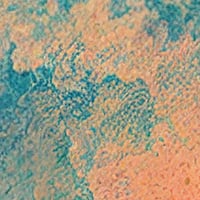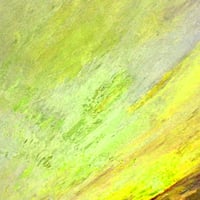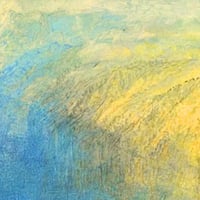kottke.org posts about best of 2007
Typographica’s list of their favorite typefaces of 2007. Some great work in that list. I also enjoyed Mark Simonson’s explanation of the difference between a font and a typeface:
The physical embodiment of a collection of letters (whether it’s a case of metal pieces or a computer file) is a font. When referring to the design of the collection (the way it looks) you call it a typeface.
Oh and also good was that they were thoughtful enough to wait until 2007 was actually over to make their selections.
An annotated list of the top ten cinematographic moments in film in 2007: part 1 and part 2.
The shot that stuck out in my head the very first time I saw the film spoke to me so deeply that I referenced it in my initial review: “A few years trickle by as Plainview adds onto his enterprise until finally, oil. A black-tarred hand reaches to the sky and suddenly you sense the influence of Stanley Kubrick on the film. Like the apes who discovered weaponry in “2001: A Space Odyssey,” Plainview has come upon the object that will dictate America’s destiny for the next century and more.” I don’t thiink I could say it any better now.
(via house next door)
Missed this a couple of months ago: the shortlisted passages in the Bad Sex Award 2007 competition.
She nods and smiles. She is absurdly beautiful. I start to slip off my jeans and I feel her gaze as I stand in my bra and pants. Why am I embarrassed about taking off my clothes right in front of a robot? I pull the dress over my head like a schoolgirl, untie my hair, and sit down. She is smiling, just a little bit, as though she knows her effect.
To calm myself down and appear in control I reverse the problem. ‘Spike, you’re a robot, but why are you such a drop-dead gorgeous robot? I mean, is it necessary to be the most sophisticated machine ever built and to look like a movie star?’
If you were still on vacation last week, you might want to check out my list of the best links of 2007. I guarantee you’ll find something to get your mind off of that looming deadline.
The 2007 installment of the BBC’s list of 100 things we didn’t know last year.
31. There is mobile phone reception from the summit of Mount Everest.
Here’s the lists for 2006, 2005, and 2004.
For the fourth year running, here are some of my favorite articles, videos, games, photography, discussions, and design pieces that I linked to in 2007. After you’re done with these, try the lists from 2004, 2005, and 2006.
The streets of Portland are an ice skating rink for cars in this video.
Reconsidering the original three Star Wars movies in light of the prequels. R2D2 = top rebel spy.
Adam Gadahn’s journey from rural California teen and death metal fan to a trusted member of Osama bin Laden’s team of operatives.
Chris Jordan’s photo series, Running the Numbers.
Michael Poliza’s aerial photos of Africa. More here.
Malcolm Gladwell on Enron and the difference between puzzles and mysteries, investigationally speaking.
Smashing Telly, a collection of TV on the web, with an emphasis on documentaries and factual programs. I liked David’s post on Zeitgeist and FEBLs.
Video of an autistic person describing the language she uses to communicate with her surroundings.
Good People, a short story by David Foster Wallace.
Nicholas Felton’s personal annual report for 2006.
A pair of posts from Neatorama on photography: 13 Photographs That Changed the World and The Wonderful World of Early Photography.
The 51 Smartest, Prettiest, Coolest, Funniest, Most Influential, Most Necessary, Most Important, Most Essential Magazines Ever.
Susan Orlean on Robert Lang, former physicist and current world-class origami master. Here’s my post on Lang.
A Line Rider masterpiece. (Line Rider?)
Kremlin Inc., a story of Vladimir Putin’s de facto dictatorship of Russia.
2007 was the year of book art: Thomas Allen’s pulp cutouts, Cara Barer’s water-crumpled books, Nina Katchadourian’s Sorted Books whose spines tell small stories, and Brian Dettmer’s book sculptures.
Joel Johnson’s great post on Gizmodo scolding the site’s writers, gadget makers, and the site’s readers “for supporting the disgusting cycle of gadget whoring”.
Denis Darzacq’s photographs of people seemingly floating above the pavement.
Panoramic photos from the Apollo missions. These are stunning.
Michael Pollan on the rise of nutritionism. His advice for healthy eating: “Eat food. Not too much. Mostly plants.”
Desktop Tower Defense. This would top my Ten Best Games of the Year list if I’d done one.
On Conscientious, several photographers answer the question “What makes a great photo?”
Shorpy, a photoblog of old photographs, and FFFFOUND!, an image bookmarking site. Neither is probably legal in the strict sense, but they’re both great online curated galleries.
Alberto Forero has collected a staggering amount of photography and design imagery and posted it to his Flickr account.
Social Explorer, interactive demographic maps.
Hypermilers try to wring as many miles per gallon out of their cars as they can. (My post.)
Darwin’s God. Are humans biologically wired to believe in God?
Dan Hill reviews Zidane: A 21st Century Portrait, a film that follows soccer star Zinedine Zidane through a single game.
Minority Kart, possibly the GAGOAT (greatest animated gif of all time).
Miranda July’s wonderful handcrafted web site for her book No One Belongs Here More Than You.
An article on commuting, this crazy thing that most Americans do too much of.
The graph of US home prices from 1890 to the present as a rollercoaster.
As a social experiment, the Washington Post arranged for internationally acclaimed violinist Joshua Bell to play outside a DC subway station. Would anyone notice?
The New Yorker on David Belle and parkour, the sport he invented.
Maciej Ceglowski reports on the Alameda-Weehawken Burrito Tunnel.
NB: Studio’s map of London constructed entirely out of type.
Trulia Hindsight, a map of property development through time.
Movies showing a closeup view of the Sun’s surface.
Video footage of Joseph Kittenger’s record jump from 102,800 feet up. Photo from Life magazine and a Boards of Canada music video that uses the footage.
Alex Reisner’s site, especially the baseball section. (My post.)
Interview with journalist Jonathan Rauch.
The greatest long tracking shots in cinema, including those in Touch of Evil and Children of Men.
Meg Hourihan took a bunch of different chocolate chip recipes, averaged the ingredients, and made cookies from the resulting meta-recipe.
The infamous four guys humping an ottoman video.
Does the Piraha language upend the theory of universal grammar?
Vimeo’s sign in page is lovely.
Tim Knowles’ drawings by trees. (My post. And more.)
How a woman randomly bumped into the person that stole her identity and chased her around until the police showed up to apprehend her.
Portraits of breaking sculpture by Martin Klimas.
Photo gallery that shows families from around the world and the amount of food they eat in the course of a week.
Errol Morris’ investigation of a pair of Roger Fenton photographs in three wonderful parts.
Roger Federer’s conservation of energy and attention helps him perform when it counts.
Jay Parkinson M.D. makes house calls, visits with patients via IM, and is generally trying to find new ways of doctoring.
Anthony Lane’s appreciation of the Leica.
Kohei Yoshiyuki’s photos of voyeurs watching lovers in a Japanese park. (My post.)
A restaurant review from the NY Times, circa 1859. My post about the review and lots more from the archives of the Times.
The story of Oscar the Cat, who comforts the dying at a Rhode Island nursing home.
Portraits of bears by Jill Greenberg. More photos at Greenberg’s site.
Long New Yorker profile of David Simon and The Wire.
Elizabeth Kolbert on bees and colony collapse disorder. And bee space.
Photoshopped pictures of people’s faces combined.
A video round (turn on the sound).
Optical illusion: is the woman rotating clockwise or counterclockwise?
From the excellent xkcd web comic: Little Bobby Tables.
Aicuña is a small secluded town in Argentina with an extremely high percentage of albino residents.
David Foster Wallace’s wonderful introduction to The Best American Essays 2007.
Video depicting several ways to melt a chocolate bunny.
Tyler Cowen on some of the opportunity costs of the war in Iraq.
Beautifully terrifying photos of nuclear tests in French Polynesia.
Standing witness to a Guitar Hero wunderkind playing the game’s most difficult song on expert level.
How America Lost the War on Drugs.
God’s Eye View is an art project by The Glue Society depicting four Biblical scenes as they would have been captured by Google Earth.
The best way to deflect an asteroid turns out to be reflecting sunlight on it with a swarm of mirror bees.
Paul Otlet presages the web in 1934, calling it the “radiated library” or “televised book”. (More context.)
This was my favorite post of the year. I hope you’ll excuse the self-link.
Oh, and maybe the best thing I didn’t link to this year: Daft Hands.
Thanks for reading kottke.org for the past year. Happy new year to you and yours.
The 2007 robot of the year is a mechanical arm made by Fanuc Ltd. and used for packaging. The arm is capable of grabbing 120 items per minute from a conveyor belt.
Swiveling frenetically, they analyzed digital images of items scattered randomly on a swiftly moving conveyor belt and picked up the items using suction cups that blow air in and out at their tips. They then worked together to place line up the items in rows inside boxes.
Here’s a video of three of these babies in action.
A list of the 50 most loathsome people in America for 2007. #9 is “you” because:
You believe in freedom of speech, until someone says something that offends you. You suddenly give a damn about border integrity, because the automated voice system at your pharmacy asked you to press 9 for Spanish. You cling to every scrap of bullshit you can find to support your ludicrous belief system, and reject all empirical evidence to the contrary. You know the difference between patriotism and nationalism — it’s nationalism when foreigners do it. You hate anyone who seems smarter than you. You care more about zygotes than actual people. You love to blame people for their misfortunes, even if it means screwing yourself over.
The top 10 archeological discoveries of 2007 as determined by Archaeology Magazine. Among the discoveries are a cuneiform tablet naming someone who is also named in the Bible, more evidence that Polynesians visited the Americas before the Europeans “discovered” it, early agriculture in Peru, and early urbanization in Syria that followed a different model than other early cities.
Tell Brak seems to have grown from the outside in. In the south, cities began as a central settlement — under a single authority — that grew outward. But Ur’s field survey shows that Tell Brak started as a central community ringed by smaller satellite settlements that expanded inward. “There isn’t a very tight control over these surrounding villages, at least at this beginning period,” says Ur. “So the assumption that we’re making is that people were coming in under their own volition.”
Very few science and ideas books made it on to the 2007 “best of” lists so Edge has provided a list of their picks for the year. I didn’t read any of the books on this list, although I’m currently 1/3 of the way through Jonah Lehrer’s Proust Was a Neuroscientist.
Long long list of the most overrated and underrated books, movies, tv shows, etc. for 2007. (via mr)
Rex has released his list of the Best Blogs of 2007 That You’re (Maybe) Not Reading over at Fimoculous. Like last year, he’s focused his best-of-blogs list on lesser-known sites instead of the biggies, a strategy I applaud. In fact, he doesn’t even need to qualify the list as the best unknown blogs; many of the well-known blogs that usually make best-of lists, much of the Technorati Top 100, and most multi-author plastered-with-ads blogs are unremarkable…too much volume, too calculated, too focused on filling post and pageview quotas, and limited passion. If you look at the sites on Rex’s list, you’ll see a lot of blogs done by people who are passionate about something, not writing for a paycheck.
Rex’s #1 choice is an inspired one and absolutely right on…Twitter and Tumblr revitalized personal publishing in the eyes of many who had either tired of blogging or had never seen the point in it in the first place. My only complaint about the list is that there are too many one-hit wonders on it, sites that are worth a chuckle or squee! when you first see them but don’t hold up over time unless you really really like, say, snowclones. Oh, and Vulture…I really wanted to like it but really didn’t get it. (Oh oh, and and Jezebel? Being against a thing is not the same as standing for something.)
Foreign Policy has posted its annual list of The Top 10 Stories You Missed in 2007 (unless, presumably, you read Foreign Policy).
A list of the top 10 astronomy images of 2007, including entwined galaxies and a dying star.
I enjoyed reading the AV Club’s The Year in Film 2007. Their hands-down best of the year was No Country For Old Men. (BTW, the term “hands-down” comes from horse racing.)
Tyler Cowen has taken a look at a lot of this year’s “best of” lists and has some meta-recommendations for you.
Regret the Error’s annual list of media errors and corrections is one of my favorites…the 2007 installment doesn’t disappoint. The corrections in the UK newspapers are awesome:
An article about Lord Lambton (“Lord Louche, sex king of Chiantishire”, News Review, January 7) falsely stated that his son Ned (now Lord Durham) and daughter Catherine held a party at Lord Lambton’s villa, Cetinale, in 1997, which degenerated into such an orgy that Lord Lambton banned them from Cetinale for years. In fact, Lord Durham does not have a sister called Catherine (that is the name of his former wife), there has not been any orgiastic party of any kind and Lord Lambton did not ban him (or Catherine) from Cetinale at all.
While not as extensive as Rex’s collection of 2007 “best of” lists, I’m compiling my own collection of such lists using the bestof2007 tag.
The NY Times Magazine is out with its annual Year in Ideas issue. 2007 was the year of green — green energy, green manufacturing, and even a green Nobel Prize for Al Gore — and environmentalism featured heavily on the Times’ list. But I found some of the other items on the list more interesting.
Ambiguity Promotes Liking. Sometimes the more you learn about a person or a situation, the more likely you are to be disappointed:
Why? For starters, initial information is open to interpretation. “And people are so motivated to find somebody they like that they read things into the profiles,” Norton says. If a man writes that he likes the outdoors, his would-be mate imagines her perfect skiing companion, but when she learns more, she discovers “the outdoors” refers to nude beaches. And “once you see one dissimilarity, everything you learn afterward gets colored by that,” Norton says.
I’m an optimistic pessimist by nature; I believe everything in my life will eventually average out for the better but I assume the worst of individual situations for the reasons proposed in the article above. That way, when I assume something isn’t going to work out, I’m rarely disappointed.
The Best Way to Deflect an Asteroid involves a technique called “mirror bees”.
The best method, called “mirror bees,” entails sending a group of small satellites equipped with mirrors 30 to 100 feet wide into space to “swarm” around an asteroid and trail it, Vasile explains. The mirrors would be tilted to reflect sunlight onto the asteroid, vaporizing one spot and releasing a stream of gases that would slowly move it off course. Vasile says this method is especially appealing because it could be scaled easily: 25 to 5,000 satellites could be used, depending on the size of the rock.
What an elegant and easily implemented solution. But Armageddon and Deep Impact would have been a whole lot less entertaining using Dr. Vasile’s approach.
The Cat-Lady Conundrum. More than 60 million Americans are infected with Toxoplasma gondii, a parasite that most people get from their cats. And it’s not exactly harmless:
Jaroslav Flegr, an evolutionary biologist at Charles University in the Czech Republic, is looking into it. He has spent years studying Toxo’s impact on human behavior. (He found, for example, that people infected with Toxo have slower reflexes and are 2.5 times as likely to get into car accidents.)
This may explain why I can’t seem to get past “Easy” on Guitar Hero.
The Honeycomb Vase is actually made by bees. One unintended consequence of having a vase made out of beeswax is that flowers last longer in it:
Libertiny is convinced that flowers last longer in them, because beeswax contains propolis, an antibacterial agent that protects against biological decay. “We found out by accident,” he explains. “We had a bouquet, which was too big for the beeswax vase, so we put half of the flowers in a glass vase. We noticed the difference after a week or so.
Prison Poker. This is a flat out brilliantly simple idea:
[Officer Tommy Ray] made his own deck of cards, each bearing information about a different local criminal case that had gone cold. He distributed the decks in the Polk County jail. His hunch was that prisoners would gossip about the cases during card games, and somehow clues or breaks would emerge and make their way to the authorities. The plan worked. Two months in, as a result of a tip from a card-playing informant, two men were charged with a 2004 murder in a case that had gone cold.
The Gomboc is the world’s first Self-Righting Object.
It leans off to one side, rocks to and fro as if gathering strength and then, presto, tips itself back into a “standing” position as if by magic. It doesn’t have a hidden counterweight inside that helps it perform this trick, like an inflatable punching-bag doll that uses ballast to bob upright after you whack it. No, the Gomboc is something new: the world’s first self-righting object.
More information is available on the Gomboc web site. You can order a Gomboc for €80 + S&H.
Update: The Gomboc is available for sale but it doesn’t come cheap. The €80 version is basically a paperweight with a Gomboc shape carved out of it. It’s €1000+ for a real Gomboc, which is ridiculous. (thx, nick)
As an alternative to the various bestseller lists, the National Book Critics Circle is creating a monthly Best Recommended List of fiction, nonfiction, and poetry, as voted on by NBCC members. The first list is already up for your perusal and holiday gift-buying idea generation.
On the heels of their 100 notable books list, the NY Times whittles it down to the ten best of the year. I interviewed Alex Ross back in October about his top tenner, The Rest is Noise.
The NY Times has released their list of the 100 Notable Books of 2007. Because of the amount of online reading I do and Ollie, my book-reading rate has declined dramatically…I only read two of the books on this list and one of those was Harry Potter 7.
The top 60 Japanese buzzwords and buzzphrases of 2007.
The term “monster parents” refers to Japan’s growing ranks of annoying parents who make extravagant and unreasonable demands of their children’s schools.
(via bb)
Older posts





Stay Connected